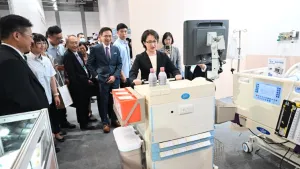
What factors fuel home blood testing devices market?
One key driver is the integration of artificial intelligence.
A rise in contagious disease outbreaks and advancements in technology are driving the global home blood testing devices market, which is projected to grow by $2.95b by 2028 at a compound annual growth rate (CAGR) of 4.66%, said Technavio.
Recent innovations in the sector include the integration of artificial intelligence (AI), such as AI-assisted viscoelastic focusing technology.
Moreover, modern devices now offer connectivity options, allowing users to sync test results with mobile applications or platforms for improved monitoring and communication with healthcare providers.
Building on this, the sector is further driven by heightened patient awareness and the convenience of self-testing.
“Home diagnostic tests allow individuals to monitor their health and manage chronic diseases like diabetes through Glucose, A1C, and glycated haemoglobin testing,” the report said.
Meanwhile, the hospital pharmacies segment serves as a notable contributor to the market by supplying home blood testing devices, including glucose monitors, cholesterol testing kits, and coagulation test kits.
“Hospital pharmacies collaborate closely with healthcare professionals to provide patients with suitable home blood testing devices based on their medical needs,” it added.


















 Advertise
Advertise


